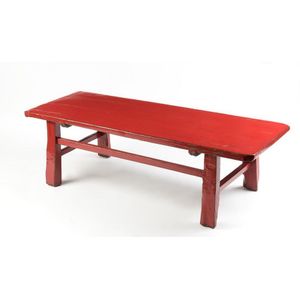Regency Rosewood Card Table by W&C Wilkinson (U.K)
A Regency period rosewood card table by W and C Wilkinson (U.K) the rectangular hinged top with interior green felt lining supported on two spindle columns attached to carved legs and brass castors. Engraved 'W&C Wilkinson London 19004' height: 74.5 cm;Top: 38.5 x 60 cm;Open: 60 x 77.5 cm
You must be a subscriber, and be logged in to view price and dealer details.
Subscribe Now to view actual auction price for this item
When you subscribe, you have the option of setting the currency in which to display prices to $Au, $US, $NZ or Stg.
This item has been sold, and the description, image and price are for reference purposes only.
- Rosewood - A dense timber that varies in shade to very light brown to almost black. When rosewood is cut and sanded the colour of the timber will turn black, and after polishing and exposure to daylight, the surface will gradually lighten over time to light brown with black streaks.
The name comes from the odour emanating from the timber when it is planed, sanded or cut.
Rosewood was very popular for use in Victorian furniture in the second half of the 19th century, and at that time most of the rosewood was imported from Brazil. However it also grows in India and Indonesia.
It is used in the sold for chairs and table legs, but for carcase furniture such as side cabinets and bookcases, and for table tops it is always used as a veneer. - Castors - Wheels, fitted especially to chair legs, couches, tables and some smaller pieces of furniture, to enable them to be easily moved about. The earliest castors were of brass, with shanks fitting into the base of the leg, and the wheels often made of leather. In the late 18th century, brass 'bucket' or 'cup' castors were introduced, either rounded or square, fitting directly over the end of the leg and held in place with screws. The wheels were generally solid brass. Bucket/cup castors continued in use throughout the 19th century and indeed are still made today. In the later 19th century wheels were sometimes made of wood, china, either white or brown, and sometimes of steel.
- Column - An architectural feature sometimes used for decorative effect and sometimes as part of the supporting construction. Columns should generally taper slightly towards the top. They may be plain or decorated with carving, fluting or reeding. Columns may be fully rounded or, more commonly, half-rounded and attached with glue, screws or pins to the outer stiles of doors, or the facing uprights on cabinets and bureaux.
- Regency Period - The Regency period in English furniture design refers to the period when King George III, was declared unfit to rule in 1811, and his son ruled as proxy as Prince Regent, until 1820, and then, after the death of his father as George IV until his death in 1830. The Regency period was preceded by the Georgian period (George I, George II, and George III: 1714 - 1811), and was followed by the William IV period, which only lasted until 1837 when William IV died as was succeeded by Queen Victoria.
This item has been included into following indexes:
Visually similar items

A Chinese red lacquer side table, circa 1920, 43 cm high, 144 cm wide, 53 cm deep
Sold by
in
for
You can display prices in $Au, $US, $NZ or Stg.

A pair of Chinese style bedside tables, the two tiered tables each with a single drawer.
Sold by
in
for
You can display prices in $Au, $US, $NZ or Stg.

Victorian walnut oblong window table with inset red leather top on twin reeded uprights and scroll legs
Sold by
in
for
You can display prices in $Au, $US, $NZ or Stg.

An Austrian Biedermeier ebonised and satin birch writing table, circa 1820, 84 cm high, 102 cm wide, 58 cm deep
Sold by
in
for
You can display prices in $Au, $US, $NZ or Stg.
